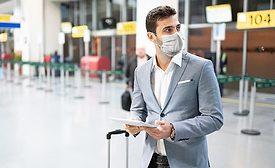Articles by Matthew Bradley
Mitigating the risks of business travel during the pandemic
What security and risk management issues do you need to consider before business travel resumes?
October 7, 2020
Sign-up to receive top management & result-driven techniques in the industry.
Join over 20,000+ industry leaders who receive our premium content.
SIGN UP TODAY!Copyright ©2024. All Rights Reserved BNP Media.
Design, CMS, Hosting & Web Development :: ePublishing










